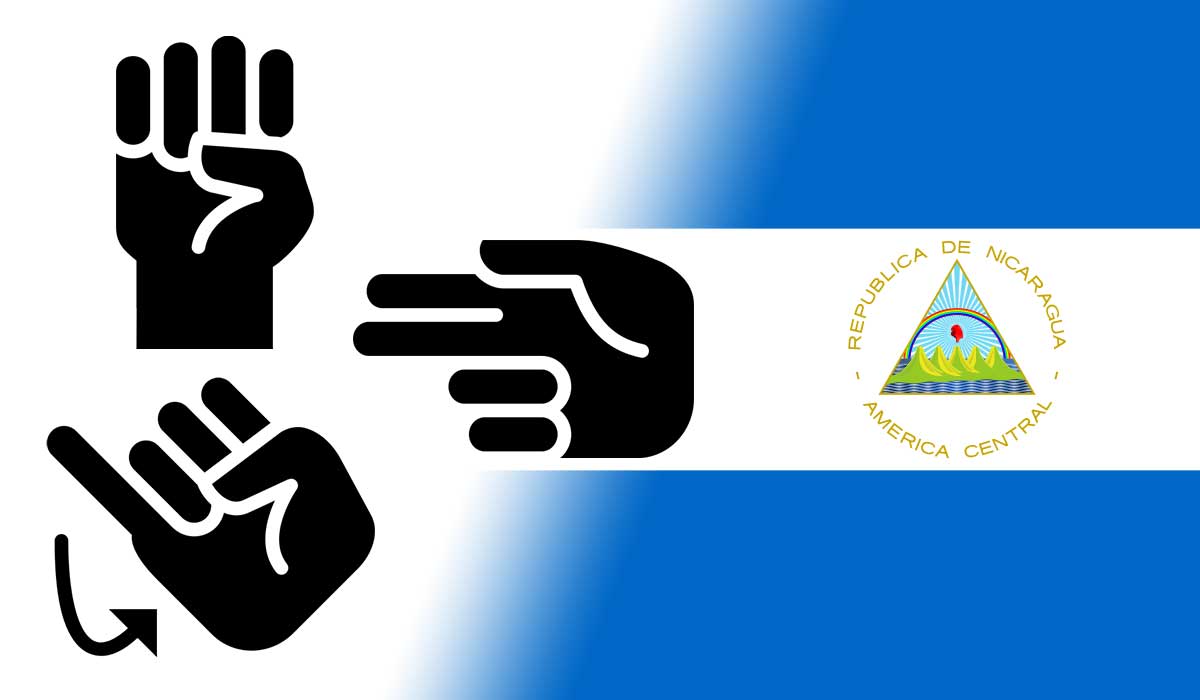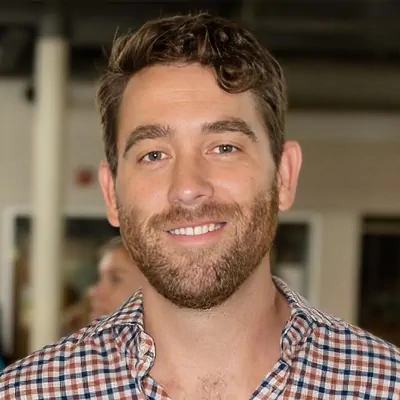What if we, as a species, could go back in time and witness the formation of language through history? Well, that’s not possible, but during the 1980’s, linguists came as close as possible to the creation of a brand new language in Nicaragua. Nicaraguan Sign Language (NSL) is in fact the only spontaneously developed language to have been recorded from its birth.[1]
Before this unique phenomenon presented itself, linguists had no opportunity to observe the development of a brand new language. This is because it is unethical to deprive humans of access to language. Obviously no one could imagine barring children from speaking for the sake of an experiment. However, political strife and eventually war, accidentally bred the situation in which Nicaraguan Sign Language would be born.
Sandinistas and The Revolution
From 1937 to 1979, Nicaragua was ruled by the Somoza family. This government is sometimes referred to as a dynasty, with each of its leaders having ruled essentially as dictators throughout these years.[2] In the midst of this dictatorship, a Nicaraguan political movement known as the Sandinista National Liberation Front began to form in 1961. The group took their name from a previous Nicaraguan revolutionary named Augusto Cesár Sandino who led an uprising against the United States’ occupation of Nicaragua in the 1920’s and 30’s.[3]
Bringing Deaf Children Together For The First Time
In 1980, after decades of turmoil, the Sandinistas assumed power in Nicaragua and set out on what they called a “literacy crusade”. Due to the civil unrest that had dominated Nicaragua for so many years, many of its citizens could not read or write. As a part of this literacy crusade, the first-ever public school for deaf children was opened in the capital city, Managua. The school, known as the Melania Morales Special Education Center, unintentionally created the environment which fostered the creation of Nicaraguan Sign Language.[4]
Oddly enough, the Melania Morales Special Education Center began with the intention to teach these children how to read lips. The modality of the language they attempted to teach these children was oral, meaning it was based entirely on spoken Spanish. Learning how to read the lips of a language which these children had never heard, proved to be difficult.[5] Additionally, the educators attempted to teach the children how to sign Spanish words using individual letters. These methods were ineffective for a multitude of reasons, including the fact that these children did not even understand the concept of a word.[6] Unsurprisingly, teaching them to read lips, or sign words in Spanish was difficult, and unsuccessful.
Careful Observations of NSL’s Early Stages
Judy and James Shepard-Kegl are co-directors of Nicaraguan Sign Language projects. Judy Kegl is an American linguist who went to Nicaragua at the beginning of NSL’s development at the request of the school for deaf children, and witnessed NSL’s evolution first-hand. When she arrived at the school, she asked the staff “what do you want from me?” Judy recalls that nearby there was a group of deaf students communicating with one another using only their hands. Pointing to this group, the staff replied “We want to know what they’re talking about. When they’re talking to each other, we can’t understand it.”[7]
Kegl says that these deaf children had only used their own sparsely developed signs at home with their families before coming to the school. In 1989 it was observed that these children came together and cobbled these various systems of home-signs into what was then described as a pidgin language.[8] A pidgin language is a grammatically simple language developed by people who speak different languages from one another, out of necessity.[9] This pidgin was given the name “Lenguaje de Signos Nicaragüense” (LSN), and is still used by the oldest members of the deaf community in Nicaragua today.[10]
By 1994, younger deaf children who were at the same school quickly learned the pidgin-LSN being used by the older deaf students. The younger children began to naturally transform the language on their own. These students then introduced more complicated language structures such as an inflectional verb morphology system and a noun classifier system. This newer form of the signing system was given the name “Idioma de Signos Nicaragüense” (ISN), and was considered a more sophisticated creole.[11]
Why NSL Developed
As noted above, before coming to the school in Managua, the deaf children of Nicaragua had been isolated from one another. With sudden emphasis on education and the formation of a school for deaf children, they were thrust together. This generated a perfect confluence of conditions for the germination of NSL. These conditions were as follows:
- The necessity to communicate.
- A community of young deaf people.
- Innate ability to create language.
- Unregulated time spent together.
Judy’s husband, James Shepard-Kegl was also present in Nicaragua for the earliest developments and observations of NSL. James suggests that prior to being with one another, these deaf children lacked the absolute need to communicate with other people. They were being fed, clothed and housed, as well as having their emotional needs met. In most cases, their parents had become accustomed to their daily needs, and communicated on their behalf.[12]
In turn, the abrupt need to communicate arose when these deaf children were separated from their parents for part of the day. Kegl believes that given these 4 circumstances, the deaf students created NSL during times of what he calls “unregulated contact”. Meaning, they created the language outside of the classroom, during recess and on their bus rides to and from school.[13]
The Importance of Young NSL Speakers
Multiple studies have proven time and again that it is easier for younger people to acquire languages than older people. The proposed age at which acquisition becomes more difficult, varies from study to study, but the overall consensus still remains. In part, this is because as people grow older their brains become less flexible. Other factors include the amount of time young children can devote to learning a language, and the fact that they have intense motivation to learn. If a child cannot learn the language being spoken around them, they cannot have their needs met as easily. Having said all of this, early childhood tends to be the best time to learn language, with the likelihood of doing so decreasing as one nears puberty.[14]
The mental flexibility of young learners played a crucial role in the advancement of NSL. Just as with spoken language, NSL was easier for the younger students to absorb. Judy Kegl posits that the youngest members of the deaf community were present for a “critical period” of the language’s maturation. According to her, the younger students had no idea that the language had been recently invented, and so they simply engaged in learning it the same as any child would apprehend a language being spoken in proximity to them. As a result, the younger students took the fairly rudimentary language, adopted it, and filled in the holes where subtleties were missing to express themselves.[15]
Molly Flaherty, a professor of psychology at Davidson College in North Carolina uses technology to track the motion of NSL signers’ wrists as they are formulating sentences. Her research found that older signers used larger and more simple signs, while younger signers used smaller, more sophisticated signs.[16] Another study building on Flaherty’s research found that the younger signers were causing the language to evolve by inventing more variations of spatial grammar and verbal agreement, using more spatial modulations.[17]
So, in the very special case of Nicaraguan Sign Language, young learners of the language not only figured out how to speak it more easily, but were critical for its transformation. Older members of the NSL community sometimes find the younger singers to be “messy” in the way they sign. However, this is simply the natural result of language development over time.[18] Without these younger signers, NSL would have remained more like its original pidgin form. Having been used by children however, NSL actually became more refined and useful for members of the community.
Conclusion
In many scientist’s opinions, Nicaraguan Sign Language provides evidence that humanity is cognitively programmed to create language.[19] Noam Chomsky, and other linguists have argued that all humans have an understanding of grammar and language genetically encoded in their brain.[20] People like Judy and James Shepard-Kegl have immersed themselves in NSL, learning it themselves, and have concluded that Chomsky’s theories are correct. This is why NSL was essentially produced out of seemingly “thin air”. Judy Shepard-Kegl believes that NSL did not come from thin air, but the human mind. She says “all the structures… all the rules” are indications that the system for language is naturally embedded in the human mind.[21] Nicaraguan Sign Language, and its creators, are evidence of this fact.
- [1] https://www.atlasobscura.com/articles/what-is-nicaraguan-sign-language
- [2] https://www.britannica.com/biography/Anastasio-Somoza
- [3] https://www.brown.edu/Research/Understanding_the_Iran_Contra_Affair/n-sandinistas.php
- [4] https://www.atlasobscura.com/articles/what-is-nicaraguan-sign-language
- [5] https://www.youtube.com/watch?v=t6Wtwz1P7zI&t=104s
- [6] https://www.youtube.com/watch?v=1xd3IdYXdow
- [7] https://www.youtube.com/watch?v=Aye0svNLVE8
- [8]The Development of Nicaraguan Sign Language via the Language Acquisition Process
- [9] https://www.merriam-webster.com/dictionary/pidgin
- [10]The Development of Nicaraguan Sign Language via the Language Acquisition Process
- [11]The Development of Nicaraguan Sign Language via the Language Acquisition Process
- [12]Language Stories by Lindsay Williams
- [13]Nicaraguan Sign Language – Language Stories: Episode 11
- [14]https://www.sciencedirect.com/science/article/pii/S1877042811025997/pdf
- [15]https://theworld.org/stories/2020-09-29/origin-nicaraguan-sign-language-tells-us-lot-about-language-creation
- [16]https://theworld.org/stories/2020-09-29/origin-nicaraguan-sign-language-tells-us-lot-about-language-creation
- [17] https://www.glossa-journal.org/article/id/6151/
- [18]https://theworld.org/stories/2020-09-29/origin-nicaraguan-sign-language-tells-us-lot-about-language-creation
- [19] https://www.altalang.com/beyond-words/nicaraguan-sign-language/
- [20]Born This Way: Chomsky’s Theory Explains Why We’re So Good at Acquiring Language
- [21] https://www.youtube.com/watch?v=Aye0svNLVE8


